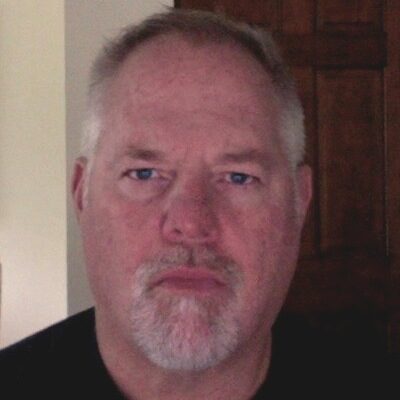For Neal Augenstein, sometimes it’s not what you say, it’s how you say it. Or even how you ask it.
“It’s extremely important how you phrase a question,” said Augenstein, a longtime reporter with WTOP in Washington D.C. “My job is to ask a question which helps me come to an understanding with conviction.”
Augenstein said the problem with many public figures is they just want to answer the questions they want to answer.
“One of the things I miss the most in news conferences is when a person would appear at the dais and say, ‘Let me tell you my thing, and I’ll take questions on anything.’ And they would take real questions, even if they were out of their comfort zone.”
Augenstein said you’ll occasionally encounter a press person telling reporters they’re not taking questions on a particular topic on that day.
“I will make it clear that while you may not want to take questions on a topic, that doesn’t preclude me from asking any question I feel necessary.”
It’s possible a press secretary has the potential to block a one-on-one interview with a candidate if you upset them, but Augenstein said it’s not like they can deny him access to a news conference.
“They may not invite me out on their boat,” he jokes.
Augenstein went to American University in 1981 to pursue a degree in broadcast journalism. While he took the required journalism classes, he was particularly intrigued by journalism ethics.
“Looking back, it’s the ethics classes I recall learning more about that than anything else,” Augenstein said. “I found the discussions about ethics and responsibility of a journalist to be more engaging and fascinating than other courses.”
Augenstein has covered many big stories in the D.C. area, including the Beltway Snipers. It was one of the most intensely covered stories by WTOP.
“Anytime there was another shooting, WTOP would send out a reporter,” Augenstein said. “That reporter would also attend follow-up news conferences trying to get an understanding of the whole situation.”
In addition to covering the shootings, Augenstein said it was important to the station to let listeners know they were concerned about them.
“We did a story on how to walk in a zig-zag pattern, making you a harder target to hit. People were filling their cars with gas so they wouldn’t run out on the side of the road. It was so frightening.”
Covering politicians and city departments come with their share of press conferences. When you enter a press conference a reporter will never fully know what they’re walking into. Will the person speaking be forthright? Honest? Give critical information?
“A public official is going to come in front of people with a wide variety of knowledge,” Augenstein said. “He or she is not expected to know everything before going into that room but needs to be well versed. A politician will say what they are required to say. They are not even required to tell the truth. Sometimes they don’t know the answers to the question I’m asking. I’m allowed to ask the stupidest question as long as I’m willing to stand by that question.”
Augenstein said there’s no more powerful feeling than when a reporter knows something to be a fact.
“If you do, you can ask that public official anything if you’re confident in your facts. That’s why having good sources is important, not only to the story, but your career. People are willing to feed information to someone they trust.”
He has no problem asking difficult questions.
“My job is to research, edit, and ask all the questions until I find out what I believe is the truth,” Augenstein said. “At least as much as I can tell is the truth. That’s what my job involves, and it’s what my listeners expect.”
He explained how politicians like to talk and answer questions in a room with their supporters around them. It’s a clear safe place for them.
“These are purely photo opportunities when they book these events. They have people in the background clapping at the bullet points. My job is to challenge that and in the nicest possible way, I need to convey I’m not seeing anything to support those assertions.”
As one of the first regular iPhone reporters in the field, Augenstein said there wasn’t much to start with.
“I was the first major market reporter in the U.S. to do all field reporting on an iPhone, and later an iPad,” Augenstein said. “That model phone is right next to UPI wire machines. I have spent a lot of time learning to work with gadgetry. I was way ahead of the pack with this.”
He said he worked with the blessing of then Program Director of WTOP, Jim Farley.
“He and I agreed we’d only utilize the sound if it was quality. My estimate of the quality of voice memo on an iPhone was 92 percent of what we considered right.”
The brass called a meeting at WTOP. The staff was told while they were number one in the market, if they didn’t expand efforts and make strides with technology and reporting, they’d eventually die off.
“We were forced to take a look at technology and social media,” Augenstein said. “If we didn’t progress we’d be in trouble. It became all about synergy. We were no longer solely a radio station.”
At WTOP, the website and radio station share information, and that has become more important as time has gone on and staff levels have diminished.
“We want our listeners to be in touch with us,” Augenstein said. “To have the confidence to stay with us on our website whether they are in the coffee shop, scrolling on their phone. Wherever they are, we’ll be reporting the story.”
Today, reporters use iPhones. Early in Augesteins’ career things weren’t so peachy.
“There was no such thing as remote reporting,” he said. “You were lucky to find a telephone. A phone booth,” Augenstein said. “While there are benefits of being able to report quickly, the possibility and consequences for making a mistake are even greater. In that sense, it has become more difficult. It’s impossible to stuff the genie back into the bottle once it has escaped.”
Last November, Augenstein, who was never a smoker, was diagnosed with Adenocarcinoma, a slow-growing form of lung cancer, which, in his case, had spread to a lymph node in his chest. Augenstein was diagnosed with stage four lung cancer in November of 2022. Since then, what might be considered a miracle has happened.
“Today my oncologist told me there is no remaining evidence of disease,” he explained. “They utilize something called targeted therapy. I’d take just one pill a day at home. The procedure is so narrowly focused on DNA and on my cancer. This is unlike chemotherapy which is basically buckshot around the entire area.”
It started with a persistent dry cough but nothing helped.
“I started to do a lot of research on cancer. If it was, I learned it had been there for years. It crossed my mind that I was doomed. I learned that being stage four doesn’t always mean you’re doomed. I’ve been a good patient and a good reporter.”
The advances in treating cancer are almost dreamlike, Augenstein said. “Now I’m in an advantageous position of being a reporter and a patient, and I can relate these experiences. Being diagnosed with cancer has given me the opportunity to communicate with the audience in a special way. It has expanded our connection. My explanation of what I went through might help people be less afraid.”

Jim Cryns writes features for Barrett News Media. He has spent time in radio as a reporter for WTMJ, and has served as an author and former writer for the Milwaukee Brewers. To touch base or pick up a copy of his new book: Talk To Me – Profiles on News Talkers and Media Leaders From Top 50 Markets, log on to Amazon or shoot Jim an email at jimcryns3_zhd@indeedemail.com.








